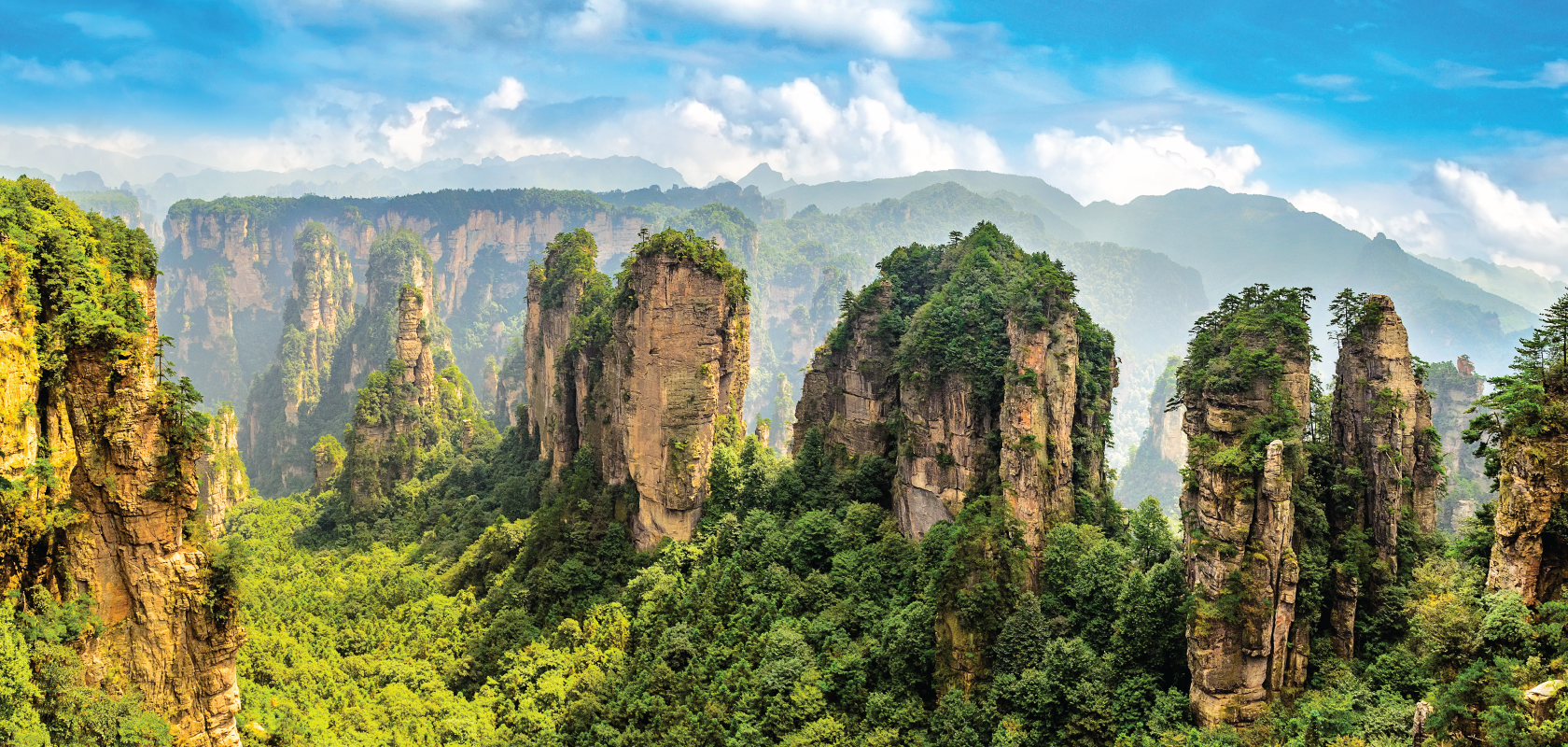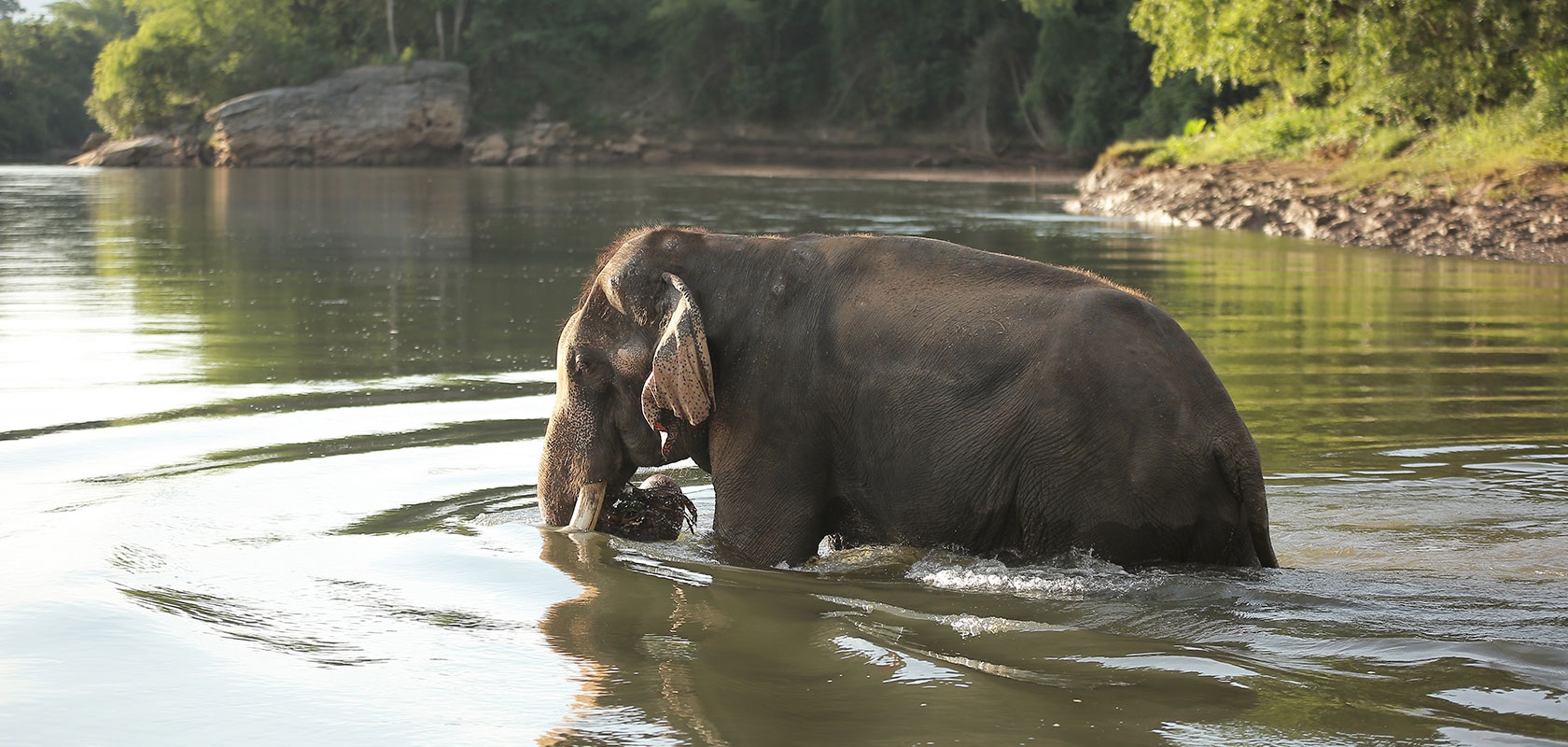Whichever direction you head in China, you won’t be far from the incredible natural scenery. North, south, east and west, China amazes travellers at every turn with dramatic mountains, tranquil valleys, lush forests, cascading waterfalls and more. While you can’t go wrong in choosing where to explore first, the five regions below boast some of the country’s most iconic natural settings.
Mountains and Rivers in Guilin
Known for its karst formations, Guilin has long held been a go-to destination for striking natural beauty and unbelievable mountains. Listed as World Natural Heritage site in 2014, the region offers some of the world’s most stunning karst formations and caves, like the famous Reed Flute Cave, together with idyllic scenery along the Li River. While in Guilin, make sure to take a leisurely boat ride down the river to be fully surrounded by the marvellous peaks and picturesque reflections. Situated in the Northeast Guangxi Zhuang Autonomous Region, the best time to visit is April to October.
Jiuzhaigou Natural Reserve in Sichuan
Another UNESCO World Natural Heritage site, Jiuzhaigou National Nature Reserve is a National Geopark and the first nature preserve in China. Located at an elevation of around 3,000 metres, the Jiuzhaigou Valley boasts hundreds of incredible lakes, waterfalls, rivers and springs, and is also home to a wide variety of rare plants, animals (including Giant Pandas), and even ancient fossils and glaciers. Highlights include Five Flower Lake, with different colours ranging from light yellow to deep blue, Changhaizi Lake and the emerald-coloured Rhinoceros Lake. The best time to visit this reserve, which is located in Sichuan Province is in the autumn from October to November.
Huangshan Mountain
Perhaps the most iconic mountain in China, Huangshan Mountain, also known as Yellow Mountain, draws in visitors with its stunning sunsets and mountaintop scenery. The view of a ‘sea of clouds’ from the mountain’s peak is particularly picturesque but photographers enjoy capturing the area’s unique pine trees and hot springs as well. The UNESCO World Heritage site is one of the country’s leading tourist destinations and best visited from November to May.
Zhangjiajie National Forest Park
In the spring (March to May) and autumn (September to November), visitors flock to Zhangjiajie National Forest Park in Hunan Province. Sprawling across 1,840 hectares, the park is best known for providing the inspiration for James Cameron’s Avatar as well as many Chinese films and television shows. The paradisiacal park is home to thousands of unique geological structures, peaks and caves, and encompasses Yangjiajie, Tianzi Mountain and Suoxiyu Nature Reserve.
Yangtze River
A cradle of Chinese culture, the Three Gorges of Yangtze River – Qutang Gorge, Wuxia Gorge and Xiling Gorge – in Sichuan and Hubei Provinces – not only a cultural symbol of Chongqing but China itself. In fact, Qutang Gorge is imprinted on the back of the 10 RMB note. Thanks to the Three Gorge Dam, a Yangtze River cruise through the different gorges is a highly popular and picturesque way to experience the region. The best time to visit is from April– December.


